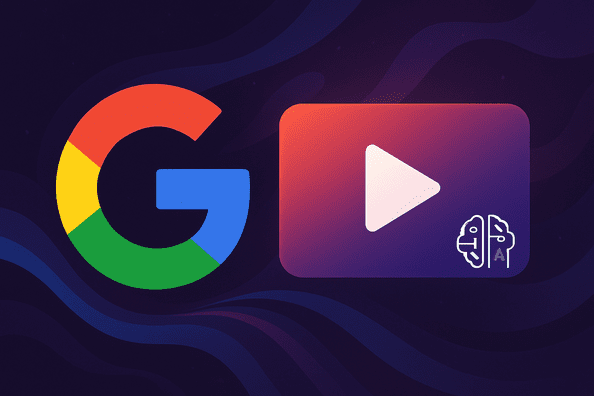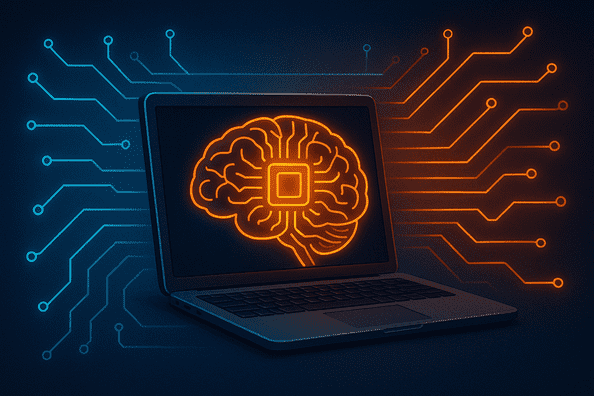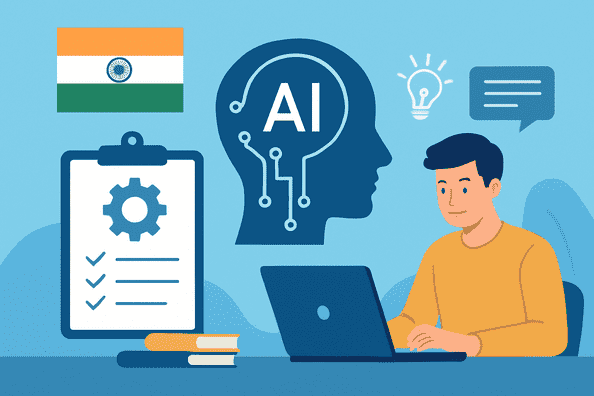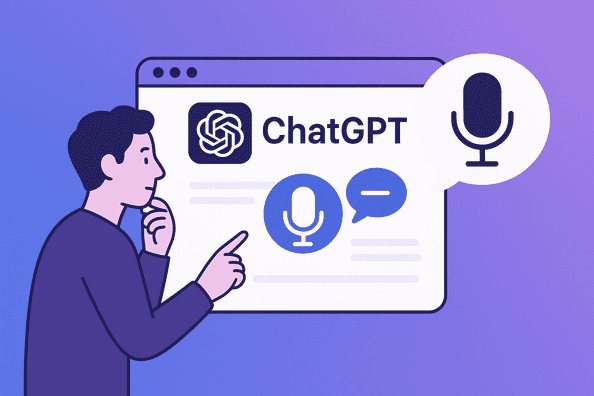The year 2025 has marked a seismic shift in artificial intelligence, and at the forefront of this revolution stands Google Veo 3—an AI video generator that doesn’t just create videos, it crafts cinematic experiences. With its unprecedented ability to generate synchronized audio, realistic physics, and Hollywood-quality visuals from simple text prompts, Veo 3 is redefining what’s possible in digital content creation. This isn’t just another AI tool; it’s the dawn of democratized filmmaking where anyone with an idea can become a storyteller.
What Makes Google Veo 3 Revolutionary
Native Audio Generation: The Game-Changing Feature
Google Veo 3’s most groundbreaking innovation lies in its native audio generation capability. Unlike competitors that require separate audio editing, Veo 3 creates synchronized soundscapes directly from text prompts. The system generates everything from ambient environmental sounds to character dialogue, background music, and realistic sound effects—all perfectly timed with the visual content.
This revolutionary approach eliminates the traditional post-production bottleneck that has long plagued video creators. As one industry expert noted, “Veo 3 has marked the difference within the gen AI industry, and we’re glad that Freepik users have been some of the first to try the model out. The quality of the video generations combined with the audio integration option is the game changer in our AI Suite”.
Technical Excellence That Sets New Standards
Veo 3 represents a quantum leap in technical capabilities, delivering 4K resolution videos with exceptional visual fidelity. The model supports sophisticated physics simulation, ensuring that liquids flow naturally, shadows fall correctly, and human movements appear lifelike. This attention to realistic physics simulation extends beyond aesthetics—it’s crucial for scientific visualization, product demonstrations, and narrative filmmaking where authentic physical behavior adds credibility to the scene.
The system’s advanced lip-syncing technology eliminates the notorious “uncanny valley” effect that has plagued AI-generated characters. Every word spoken is perfectly aligned with mouth movements, while facial expressions, eye movements, and subtle gestures sync harmoniously with speech, creating characters that feel genuinely alive and emotionally engaging.
Prompt Comprehension and Creative Control
Powered by Google’s Gemini language models, Veo 3 offers exceptional prompt adherence that understands nuanced creative directions. Users can specify complex cinematic techniques, from “a drone shot over a jungle” to specific art styles and camera movements, with the AI accurately interpreting and executing these creative visions.
AI Filmmaking Tools 2025: A Paradigm Shift
The Professional Landscape Transformation
The integration of AI filmmaking tools in 2025 has fundamentally altered professional video production workflows. Studios are no longer seeking the most complex software but tools that consistently deliver within real production environments. As film industry consultant Olivier French observed, “You can talk all you want, but if you don’t execute, it doesn’t matter”.
The democratization of video production through AI has made professional-quality content creation accessible to individuals and small businesses without expensive equipment or extensive technical expertise. This shift is particularly evident in the e-learning, marketing, and news reporting sectors, where rapid video production has become crucial for maintaining competitive advantage.
Integration with Professional Workflows
Google’s Flow platform, designed specifically for creative professionals, represents the next evolution in AI-powered filmmaking 10. Flow combines Veo 3 with Imagen and Gemini models, offering features like camera controls, scene building, and asset management that cater to both professionals and newcomers. The platform allows creators to maintain character consistency across different clips and scenes, integrate custom assets, and use scene images to start new shots.
How Creators Are Using Google Veo 3 for Short Films
Real-World Creative Applications
The creative community has embraced Veo 3 with remarkable enthusiasm, producing content that ranges from commercial advertisements to artistic short films. One notable example is the fully AI-generated commercial for Kalshi that aired during the NBA Finals, capturing over 18 million views within just two days. This demonstrates how Veo 3 is being used to create compelling marketing content without traditional production costs.
Content creators are experimenting with diverse applications, from quick visual explainers for educational purposes to animated demonstrations of natural disasters and cultural traditions. The platform’s ability to maintain narrative coherence across complex, multi-scene prompts has enabled creators to produce mini-films with consistent characters and settings.
YouTube Shorts Integration
Google’s strategic integration of Veo 3 into YouTube Shorts represents a significant expansion of AI-generated content on social media platforms. YouTube CEO Neal Mohan announced at the Cannes Lions film festival that Veo 3 would enhance the existing Dream Screen feature, allowing creators to generate elaborate, polished-looking video clips with just text prompts. Given that YouTube Shorts averages 200 billion views per day, this integration positions Veo 3 at the center of short-form content creation.
However, this development has raised questions about content authenticity and monetization policies for AI-generated material. The integration is expected to go live later in summer 2025, potentially transforming how creators approach short-form video content.
Best Use Cases of Google Veo 3 in Video Production
Commercial and Marketing Applications
Advertising agencies and marketers are leveraging Veo 3 to create compelling visual campaigns without the high costs of traditional production. The technology excels in generating product demonstrations, brand storytelling content, and social media advertisements that require quick turnaround times and consistent quality.
The versatility of Veo 3 extends to various commercial applications:
- Product Visualization: Creating dynamic product demonstrations that showcase features and benefits in realistic scenarios.
- Brand Storytelling: Developing narrative-driven content that connects with audiences on emotional levels.
- Social Media Content: Generating engaging posts, stories, and advertisements optimized for different platforms.
Educational and Training Content
Educational institutions and corporate training departments are utilizing Veo 3 to create interactive learning materials. The technology’s ability to generate accurate scientific visualizations and cultural demonstrations makes it particularly valuable for subjects that benefit from visual representation.
Teachers and online educators are experimenting with Veo 3 to create quick visual explainers, animated demonstrations of complex concepts, and culturally relevant content that resonates with local communities. This application is particularly powerful for subjects like physics, chemistry, and cultural studies where visual representation enhances understanding.
Enterprise and Scalable Production
Google Cloud’s Vertex AI platform now offers Veo 3 for enterprise customers, enabling scalable video generation for large organizations. The enterprise implementation includes crucial safeguards like safety filter controls and SynthID watermarking to ensure responsible deployment across various use cases.
Enterprise customers are using Veo 3 for both external content creation—including social media advertisements and product demonstrations—and internal materials like training videos and presentations. The scalability of the platform allows organizations to maintain consistent brand messaging across multiple video productions while significantly reducing production timelines and costs.
Technical Specifications and Capabilities
Resolution and Performance Standards
Veo 3 delivers exceptional video quality with support for full HD and 4K resolution output. The system generates videos ranging from 4 to 60 seconds in length, with most consumer applications focusing on 8-second clips that maintain high quality while optimizing for processing speed. The model supports various aspect ratios and framerates, making it suitable for different distribution platforms and use cases.
Audio-Visual Synchronization
The breakthrough in audio-visual generation represents one of Veo 3’s most significant technical achievements. The system produces synchronized dialogue, sound effects, and background audio in real-time, creating rich soundscapes that contain everything from character dialogue and ambient noise to sound effects and background music. This comprehensive audio generation eliminates the need for separate sound design and mixing processes.
Model Architecture and Performance
Veo 3 utilizes advanced diffusion-transformer architecture combined with improved understanding of physics to deliver realistic visual outputs. The computational requirements are substantial, with estimates suggesting the equivalent of eight H200 GPUs for optimal performance. This computational intensity reflects the model’s sophisticated capabilities but also contributes to its premium pricing structure.
Pricing and Accessibility
Current Pricing Structure
Google Veo 3 operates on a premium pricing model that reflects its advanced capabilities. The technology is available through multiple access points:
- Google AI Ultra Plan: $249.99 per month, providing full access to Veo 3 with maximum usage limits. New subscribers receive a 50% discount for the first three months.
- Google AI Pro Plan: $19.99 per month, offering limited access to Veo 3 with up to three clips per day and watermarked previews.
- Vertex AI Enterprise: $0.75 per second for video with audio generation, targeting enterprise customers with scalable needs.
Cost Analysis and Value Proposition
The pricing structure has generated significant debate within the creative community. Some users report success rates as low as 25% with their prompts, raising questions about cost-effectiveness. Independent testing has revealed challenges with dialogue synchronization and complex scene generation, leading some creators to explore alternatives.
However, supporters argue that the technology’s unique combination of video and audio generation justifies the premium pricing, particularly for professional applications where traditional production costs would far exceed the subscription fees.
Competitive Landscape and Market Position
Comparison with Leading Competitors
In the rapidly evolving AI video generation market, Veo 3 distinguishes itself primarily through its native audio capabilities. Compared to OpenAI’s Sora, which cannot generate audio, Veo 3 offers a more comprehensive solution for creators seeking complete audiovisual content. Side-by-side comparisons show Veo 3 excelling in human animation realism and maintaining more coherent storytelling across longer sequences.
The competitive analysis reveals distinct advantages:
- vs. OpenAI Sora: Veo 3 offers native audio generation and longer video sequences (up to 60 seconds vs. 20 seconds)
- vs. Runway Gen-3: Superior audio integration and extended length capabilities (60 seconds vs. 15 seconds)
- vs. Other Platforms: Unique combination of 4K realism, physics consistency, and comprehensive audio generation
Market Impact and Industry Adoption
The introduction of Veo 3 has accelerated industry-wide adoption of AI video tools. Enterprise customers from companies like Freepik and Lightricks have integrated the technology into their platforms, demonstrating its commercial viability and scalability. The technology’s impact extends beyond individual creators to platform-level integration, with services like Canva introducing Veo-powered video creation features.
Expert Opinions and Industry Reception
Professional Testimonials
Industry leaders have provided mixed but generally optimistic assessments of Veo 3’s capabilities. Will Hanschell, co-founder and CEO of Pencil, stated: “Veo 3 is the single greatest leap forward in practically useful AI for advertising since genAI first broke into the mainstream in 2023. By allowing brands to make fully fledged films from a single prompt – including brand, story, video, sound effects, voiceovers and more – Veo3 in one swoop lowers the barriers to entry to gen AI for creative people and elevates gen AI to a top tier brand building tool usable at every stage of the marketing funnel”.
Zeev Farbman, Co-Founder & CEO of Lightricks, emphasized the collaborative potential: “Creativity is deeply personal, and our goal is to build a platform that adapts to every workflow. By working with Google, we’re combining the best technologies to give creators more control, efficiency, and power than ever before”.
Critical Assessments and Limitations
However, independent testing has revealed significant challenges with the platform’s consistency and reliability. Extended testing by some users has shown success rates as low as 25%, with particular difficulties in dialogue synchronization and complex scene generation. These limitations have led some creators to seek alternative solutions, particularly for dialogue-heavy content23.
The high pricing relative to output quality has also drawn criticism, with some users comparing the cost-per-second unfavorably to traditional production methods. These critiques highlight the ongoing tension between technological promise and practical implementation in professional workflows.
The Future of AI Video Creation
Technology Roadmap and Predictions
The trajectory of AI video creation technology suggests continued rapid advancement through 2025 and beyond. Industry experts predict the emergence of fully autonomous AI-driven content creation pipelines that will minimize human intervention while maximizing creative output. By 2026, the development of truly autonomous data ecosystems is expected to enable real-time content optimization and generation.
The integration of AI into video production workflows is expected to accelerate, with tools becoming more sophisticated in their ability to understand creative intent and execute complex visual narratives. Machine learning advances will likely improve scene understanding, character consistency, and narrative coherence across longer-form content.
Implications for Content Creation Industry
The democratization of video production through AI tools like Veo 3 represents a fundamental shift in how content is created and distributed. This transformation extends beyond individual creators to encompass entire production pipelines, from scriptwriting to final edits. The technology is enabling creators to experiment with innovative formats and styles while significantly reducing production timelines.
The rise of AI-powered content creation also raises important questions about authenticity, copyright, and the role of human creativity in an increasingly automated landscape. As these tools become more sophisticated, the industry must navigate the balance between technological capability and creative authenticity.
Conclusion
Google Veo 3 represents more than just another AI tool—it embodies the future of democratized content creation. With its revolutionary native audio generation, cinematic-quality visuals, and sophisticated understanding of creative intent, Veo 3 has established new benchmarks for what AI can achieve in video production. While challenges remain in terms of consistency, pricing, and reliability, the technology’s potential to transform how we create and consume video content is undeniable.
The platform’s integration into professional workflows, from marketing agencies to educational institutions, demonstrates its practical value beyond technical novelty. As creators continue to explore its capabilities and Google refines the technology based on user feedback, Veo 3 is positioned to play a pivotal role in shaping the next generation of digital storytelling.
The future of AI video creation is not just about replacing traditional production methods—it’s about expanding the universe of who can tell stories and how those stories can be told. In this new landscape, the only limitation is imagination itself.
Frequently Asked Questions
Q: What makes Google Veo 3 different from other AI video generators?
A: Veo 3’s key differentiator is its native audio generation capability, creating synchronized dialogue, sound effects, and background music directly from text prompts. Unlike competitors that focus solely on visuals, Veo 3 delivers complete audiovisual experiences in a single generation process.
Q: How much does Google Veo 3 cost and what are the access options?
A: Veo 3 is available through Google AI Ultra at $249.99/month (with a 50% discount for first three months), Google AI Pro at $19.99/month with limited access, or Vertex AI at $0.75 per second for enterprise customers.
Q: What are the current limitations of Google Veo 3?
A: Users report challenges with dialogue synchronization, complex scene generation, and success rates as low as 25% for certain types of prompts. The technology works best with simple scenarios and objects rather than complex multi-character interactions.
Q: Can I use Google Veo 3 for commercial purposes?
A: Yes, Veo 3 supports commercial use through appropriate subscription plans and enterprise access. All generated content includes watermarking and SynthID for responsible AI use identification.
Q: What video formats and lengths does Veo 3 support?
A: Veo 3 currently generates videos ranging from 4 to 60 seconds in length, with most consumer applications focusing on 8-second clips. The system supports various aspect ratios, full HD to 4K resolution, and multiple framerates.



